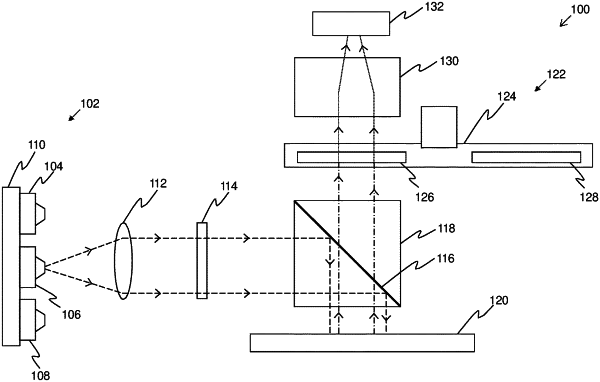| CPC G01N 21/6428 (2013.01) [G01N 2021/6439 (2013.01); G01N 2021/6471 (2013.01)] | 10 Claims |

|
1. A method for analysing fluorospot assays, wherein the method accurately determines secretion intensities of cells by analysing different spatial intensity profiles among spots of the secreted analytes, and distinguishes individual spots, wherein the method comprises:
(i) illuminating a well of an assay plate having plurality of wells, with at least one excitation light, wherein at a given time, the well of the assay plate is illuminated by only one excitation light;
(ii) capturing at least one image of the well, in raw image format, for each of the at least one excitation light;
(iii) generating a model of analyte release distribution in the well for each of the at least one excitation light; and
(iv) clustering a plurality of co-positioned fluorospots as a multiple secretion fluorospot, wherein the clustering is performed for all generated models of analyte release distribution, and wherein the clustering determines at least one multiple secretion fluorospot, wherein the method is characterized in that
(iii) generating the model of analyte release distribution in the well for each of the at least one excitation light comprises
(a) deconvolving the captured at least one image of the well for the given excitation light to estimate a pre-diffusion analyte distribution, wherein deconvolving the captured at least one image of the well for the given excitation light is performed to a time prior to local diffusion, wherein the at least one image of the well is indicative of spatially located analyte sources and temporally located analyte sources and
wherein deconvolving the captured at least one image of the well comprises implementing at least one of: sparsity-promoting regularization, multiplicative update rules, forward-backward proximal gradient algorithms;
(b) detecting at least one potential analyte release site based on local maxima in the pre-diffusion analyte distribution;
(c) optimizing the pre-diffusion analyte distribution based on the detected at least one potential release site,
wherein optimizing the pre-diffusion analyte distribution based on the detected at least one potential analyte release site is implemented iteratively at least once, and comprises employing at least one of: alternating direction methods, multiplicative update rules, forward-backward proximal gradient algorithms.
|